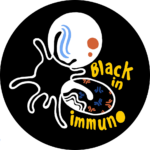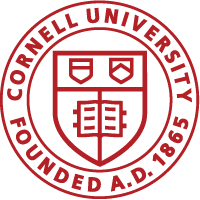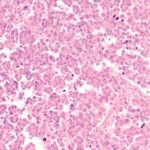 The Department of Microbiology and Immunology and the Center for Immunology at Cornell University invite applications from scientists focused on Molecular or Cellular Immunology for multiple tenure-track positions at the Assistant, Associate or Full Professor levels. We are seeking outstanding investigators who use innovative approaches to study innate or adaptive immunity, including but not limited to host-microbe interactions, mucosal immunity, tumor immunology, neuro-immunology, autoimmunity and vaccines. Candidates with interests in high-dimensional genomic and imaging approaches are particularly encouraged to apply.
The Department of Microbiology and Immunology and the Center for Immunology at Cornell University invite applications from scientists focused on Molecular or Cellular Immunology for multiple tenure-track positions at the Assistant, Associate or Full Professor levels. We are seeking outstanding investigators who use innovative approaches to study innate or adaptive immunity, including but not limited to host-microbe interactions, mucosal immunity, tumor immunology, neuro-immunology, autoimmunity and vaccines. Candidates with interests in high-dimensional genomic and imaging approaches are particularly encouraged to apply.
News
Discovery needs diversity: Black in Immunology Week drives awareness on inclusion within the field
 As events ignited mainstream awareness and urgency around systemic racism and inequalities, the scientific community has rallied to address systemic bias. Black in Immuno, a movement started by six early-career Black scientists, is mobilizing scientific communities to support Black immunologists.
As events ignited mainstream awareness and urgency around systemic racism and inequalities, the scientific community has rallied to address systemic bias. Black in Immuno, a movement started by six early-career Black scientists, is mobilizing scientific communities to support Black immunologists.
NIH extends funding of research into deadly Nipah virus
 A Cornell researcher is studying Nipah virus in an effort to understand the basic mechanisms of transmission and infection, which are necessary steps toward vaccine development and other therapies.
A Cornell researcher is studying Nipah virus in an effort to understand the basic mechanisms of transmission and infection, which are necessary steps toward vaccine development and other therapies.
Dr. Virginia Pascual Leads Grant to Study Immune Responses in Children with COVID-19 and Receives Prestigious ACR Award
 Dr. Virginia Pascual, the Drukier Director of the Gale and Ira Drukier Institute for Children’s Health at Weill Cornell Medicine, has been awarded a grant supplement from the National Institute of Allergy and Infectious Diseases (NIAID) to lead a multi-institutional effort studying differences in immune responses in children infected with SARS-CoV-2.
Dr. Virginia Pascual, the Drukier Director of the Gale and Ira Drukier Institute for Children’s Health at Weill Cornell Medicine, has been awarded a grant supplement from the National Institute of Allergy and Infectious Diseases (NIAID) to lead a multi-institutional effort studying differences in immune responses in children infected with SARS-CoV-2.
T-Cells from Recovered COVID-19 Patients Show Promise to Protect Vulnerable Patients from Infection
Engineered bacteria churn out cancer biomarkers
 Researchers successfully engineered E. coli bacteria to produce O-linked glycoproteins – research that will illuminate the complex process of glycosylation and th role that protein-linked glycans play in health and disease.
Researchers successfully engineered E. coli bacteria to produce O-linked glycoproteins – research that will illuminate the complex process of glycosylation and th role that protein-linked glycans play in health and disease.
Taste buds may play role in fostering obesity in offspring
 Cornell food scientists show in animal studies that a mother’s high-fat diet may lead to more sweet-taste receptors in taste buds resulting in poor feeding behavior, obesity in adulthood.
Cornell food scientists show in animal studies that a mother’s high-fat diet may lead to more sweet-taste receptors in taste buds resulting in poor feeding behavior, obesity in adulthood.
Read the full story here.
Veterinary college team IDs gene that drives ovarian cancer
Research Highlights, July 2020
Below is a sampling of scholarly works published by center members from across different areas of investigation in June, 2020.
TBL1XR1 Mutations Drive Extranodal Lymphoma by Inducing a Pro-Tumorigenic Memory Fate
Venturutti, Leandro, et al. “TBL1XR1 Mutations Drive Extranodal Lymphoma by Inducing a Pro-Tumorigenic Memory Fate.” Cell, vol. 182, no. 2, July 2020, pp. 297–316. EBSCOhost, doi:10.1016/j.cell.2020.05.049.
The most aggressive B cell lymphomas frequently manifest extranodal distribution and carry somatic mutations in the poorly characterized gene TBL1XR1. Here, we show that TBL1XR1 mutations skew the humoral immune response toward generating abnormal immature memory B cells (MB), while impairing plasma cell differentiation. At the molecular level, TBL1XR1 mutants co-opt SMRT/HDAC3 repressor complexes toward binding the MB cell transcription factor (TF) BACH2 at the expense of the germinal center (GC) TF BCL6, leading to pre-memory transcriptional reprogramming and cell-fate bias. Upon antigen recall, TBL1XR1 mutant MB cells fail to differentiate into plasma cells and instead preferentially reenter new GC reactions, providing evidence for a cyclic reentry lymphomagenesis mechanism. Ultimately, TBL1XR1 alterations lead to a striking extranodal immunoblastic lymphoma phenotype that mimics the human disease. Both human and murine lymphomas feature expanded MB-like cell populations, consistent with a MB-cell origin and delineating an unforeseen pathway for malignant transformation of the immune system.
Ari Melnick
Equine pegiviruses cause persistent infection of bone marrow and are not associated with hepatitis
Tomlinson, Joy E., et al. “Equine Pegiviruses Cause Persistent Infection of Bone Marrow and Are Not Associated with Hepatitis.” PLoS Pathogens, vol. 16, no. 7, July 2020, pp. 1–23. EBSCOhost, doi:10.1371/journal.ppat.1008677.
Pegiviruses frequently cause persistent infection (as defined by >6 months), but unlike most other Flaviviridae members, no apparent clinical disease. Human pegivirus (HPgV, previously GBV-C) is detectable in 1–4% of healthy individuals and another 5–13% are seropositive. Some evidence for infection of bone marrow and spleen exists. Equine pegivirus 1 (EPgV-1) is not linked to disease, whereas another pegivirus, Theiler’s disease-associated virus (TDAV), was identified in an outbreak of acute serum hepatitis (Theiler’s disease) in horses. Although no subsequent reports link TDAV to disease, any association with hepatitis has not been formally examined. Here, we characterized EPgV-1 and TDAV tropism, sequence diversity, persistence and association with liver disease in horses. Among more than 20 tissue types, we consistently detected high viral loads only in serum, bone marrow and spleen, and viral RNA replication was consistently identified in bone marrow. PBMCs and lymph nodes, but not liver, were sporadically positive. To exclude potential effects of co-infecting agents in experimental infections, we constructed full-length consensus cDNA clones; this was enabled by determination of the complete viral genomes, including a novel TDAV 3′ terminus. Clone derived RNA transcripts were used for direct intrasplenic inoculation of healthy horses. This led to productive infection detectable from week 2–3 and persisting beyond the 28 weeks of study. We did not observe any clinical signs of illness or elevation of circulating liver enzymes. The polyprotein consensus sequences did not change, suggesting that both clones were fully functional. To our knowledge, this is the first successful extrahepatic viral RNA launch and the first robust reverse genetics system for a pegivirus. In conclusion, equine pegiviruses are bone marrow tropic, cause persistent infection in horses, and are not associated with hepatitis. Based on these findings, it may be appropriate to rename the group of TDAV and related viruses as EPgV-2. Author summary: Transmissible hepatitis in horses (Theiler’s disease) has been known for 100 years without knowledge of causative infectious agents. Recently, two novel equine pegiviruses (EPgV) were discovered. Whereas EPgV-1 was not associated to disease, the other was identified in an outbreak of acute serum hepatitis and therefore named Theiler’s disease-associated virus (TDAV). This finding was surprising since human and monkey pegiviruses typically cause long-term infection without associated clinical disease. Whereas no subsequent reports link TDAV to disease, the original association to hepatitis has not been formally examined. Here, we studied EPgV-1 and TDAV and found that their natural history of infection in horses were remarkably similar. Examination of various tissues identified the bone marrow as the primary site of replication for both viruses with no evidence of replication in the liver. To exclude potential effects of other infectious agents, we developed molecular full-length clones for EPgV-1 and TDAV and were able to initiate infection in horses using derived synthetic viral genetic material. This demonstrated long-term infection, but no association with hepatitis. These findings call into question the connection between TDAV, liver infection, and hepatitis in horses
Gerlinde Van de Walle
Modulating microbiome metabolites in vivo
Guo, Chun-Jun. “Modulating Microbiome Metabolites in Vivo.” Science (New York, N.Y.), vol. 369, no. 6500, July 2020, p. 153. EBSCOhost, doi:10.1126/science.abc5620.
Decades of microbiome studies, using a combination of multiomics approaches, have revealed strong associations between microbiota and human health. The next step is to identify the causal molecular mechanisms behind this association: Which microbes, genes, and their metabolites, if any, are responsible for a host phenotype? And if these molecules do affect us, how can we modulate their concentrations in the host to promote gut health?
CJ Guo
Human Endogenous Retrovirus K in Cancer: A Potential Biomarker and Immunotherapeutic Target
Curty, Gislaine, et al. “Human Endogenous Retrovirus K in Cancer: A Potential Biomarker and Immunotherapeutic Target.” VIRUSES-BASEL, vol. 12, no. 7. EBSCOhost, doi:10.3390/v12070726.
In diseases where epigenetic mechanisms are changed, such as cancer, many genes show altered gene expression and inhibited genes become activated. Human endogenous retrovirus type K (HERV-K) expression is usually inhibited in normal cells from healthy adults. In tumor cells, however, HERV-K mRNA expression has been frequently documented to increase. Importantly, HERV-K-derived proteins can act as tumor-specific antigens, a class of neoantigens, and induce immune responses in different types of cancer. In this review, we describe the function of the HERV-K HML-2 subtype in carcinogenesis as biomarkers, and their potential as targets for cancer immunotherapy.
Douglas Nixon
Going back in time for an antibody to fight COVID-19
Whittaker, Gary R., and Susan Daniel. “Going Back in Time for an Antibody to Fight COVID-19.” Nature: International Weekly Journal of Science, vol. 583, no. 7815, 2020, p. 203. EBSCOhost, doi:10.1038/d41586-020-01816-5.
Efforts are intensifying to try to harness antibodies as a therapy for COVID-19. A study reveals the insights that can be gained from antibodies made by a person who had a coronavirus infection that caused the disease SARS.
Gary Whittaker
Microbial tryptophan metabolites regulate gut barrier function via the aryl hydrocarbon receptor|
Scott, Samantha A., et al. “Microbial Tryptophan Metabolites Regulate Gut Barrier Function via the Aryl Hydrocarbon Receptor.” Proceedings of the National Academy of Sciences of the United States, no. 32, 2020, p. 19376. EBSCOhost, doi:10.1073/pnas.2000047117.
Inflammatory bowel diseases (IBDs), including Crohn’s disease and ulcerative colitis, are associated with dysbiosis of the gut microbiome. Emerging evidence suggests that small-molecule metabolites derived from bacterial breakdown of a variety of dietary nutrients confer a wide array of host benefits, including amelioration of inflammation in IBDs. Yet, in many cases, the molecular pathways targeted by these molecules remain unknown. Here, we describe roles for three metabolites—indole-3-ethanol, indole-3-pyruvate, and indole-3-aldehyde—which are derived from gut bacterial metabolism of the essential amino acid tryptophan, in regulating intestinal barrier function. We determined that these metabolites protect against increased gut permeability associated with a mouse model of colitis by maintaining the integrity of the apical junctional complex and its associated actin regulatory proteins, including myosin IIA and ezrin, and that these effects are dependent on the aryl hydrocarbon receptor. Our studies provide a deeper understanding of how gut microbial metabolites affect host defense mechanisms and identify candidate pathways for prophylactic and therapeutic treatments for IBDs.
Pamela Chang
Immunoprophylactic and immunotherapeutic control of hormone receptor-positive breast cancer
Buqué, Aitziber, et al. “Immunoprophylactic and Immunotherapeutic Control of Hormone Receptor-Positive Breast Cancer.” Nature Communications, vol. 11, no. 1, 2020. EBSCOhost, doi:10.1038/s41467-020-17644-0.
Hormone receptor (HR)+ breast cancer (BC) causes most BC-related deaths, calling for improved therapeutic approaches. Despite expectations, immune checkpoint blockers (ICBs) are poorly active in patients with HR+ BC, in part reflecting the lack of preclinical models that recapitulate disease progression in immunocompetent hosts. We demonstrate that mammary tumors driven by medroxyprogesterone acetate (M) and 7,12-dimethylbenz[a]anthracene (D) recapitulate several key features of human luminal B HR+HER2− BC, including limited immune infiltration and poor sensitivity to ICBs. M/D-driven oncogenesis is accelerated by immune defects, demonstrating that M/D-driven tumors are under immunosurveillance. Safe nutritional measures including nicotinamide (NAM) supplementation efficiently delay M/D-driven oncogenesis by reactivating immunosurveillance. NAM also mediates immunotherapeutic effects against established M/D-driven and transplantable BC, largely reflecting increased type I interferon secretion by malignant cells and direct stimulation of immune effector cells. Our findings identify NAM as a potential strategy for the prevention and treatment of HR+ BC.
Lorenzo Galluzzi, Olivier Elemento
Scientists Discover Potential New Target for Future Tuberculosis Drugs
 A team of scientists from Weill Cornell Medicine and Texas A&M University has identified a tuberculosis (TB) protein that future drugs might be able to target, with minimal side-effects compared to current treatments—potentially a critical discovery given the global public health crisis of drug-resistant TB.
A team of scientists from Weill Cornell Medicine and Texas A&M University has identified a tuberculosis (TB) protein that future drugs might be able to target, with minimal side-effects compared to current treatments—potentially a critical discovery given the global public health crisis of drug-resistant TB.


 T-cells taken from the blood of people who recovered from a COVID-19 infection can be successfully multiplied in the lab and maintain the ability to effectively target proteins that are key to the virus’s function.
T-cells taken from the blood of people who recovered from a COVID-19 infection can be successfully multiplied in the lab and maintain the ability to effectively target proteins that are key to the virus’s function. Scientists at the College of Veterinary Medicine have published a study that pinpoints which specific genes drive or delay high-grade serious ovarian carcinoma, the fifth-leading cause of cancer-related deaths in U.S. women.
Scientists at the College of Veterinary Medicine have published a study that pinpoints which specific genes drive or delay high-grade serious ovarian carcinoma, the fifth-leading cause of cancer-related deaths in U.S. women.
